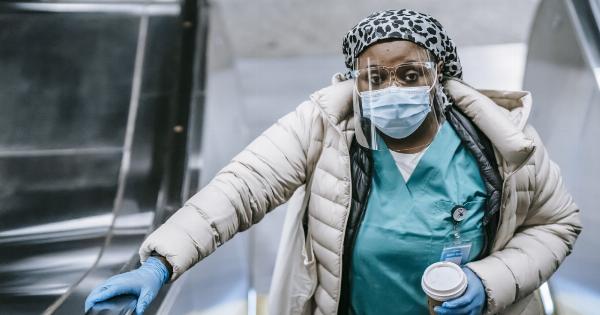When entering the workforce, many individuals begin with entry-level jobs that are considered safe and low-risk. However, it is important to recognize that even seemingly harmless jobs can potentially lead to fatalities.
While rare, accidents and hazardous situations can occur in any industry. In this article, we will explore some beginner’s jobs that have the potential to end in fatality, emphasizing the importance of workplace safety and awareness.
Construction Laborer
Construction laborers work in physically demanding environments, often exposed to heavy machinery, hazardous materials, and dangerous heights. From building structures to operating power tools, the risk of accidents is inherent in this field.
Slip and fall accidents, collapsing scaffolding, electrocution, and equipment malfunctions are just a few examples of potential risks that construction laborers face daily. It is crucial for workers in this field to receive proper training, follow safety protocols, and utilize safety equipment to prevent accidents that could result in fatalities.
Commercial Fisherman
Commercial fishing is considered one of the most dangerous occupations globally due to its unpredictable nature. Fishermen face inclement weather conditions, unstable vessels, and heavy machinery.
Working long hours in remote locations, they are exposed to risks like falls overboard, shipwrecks, and injuries caused by fishing gear. Furthermore, deep-sea fishing can lead to incidents such as drowning or hypothermia. Fishermen must remain vigilant, well-trained, and equipped with life-saving tools to mitigate these risks.
Roofing Technician
Roofing technicians are responsible for installing and repairing roofs. They often work at significant heights, exposing themselves to the risk of falls. Without proper safety precautions or harnesses, a simple slip can result in fatal injuries.
Additionally, working with sharp tools and heavy materials may increase the likelihood of accidents. Roofing technicians must prioritize safety training and consistently follow safety guidelines to minimize the risk of fatalities.
Delivery Driver
Delivery drivers spend countless hours on the road, facing various potential dangers. They are vulnerable to traffic accidents, aggressive drivers, and adverse weather conditions.
Long hours of driving can lead to fatigue, increasing the risk of accidents. Additionally, drivers may encounter dangerous situations when delivering to unfamiliar or unsafe neighborhoods.
Employers should provide comprehensive training and enforce safety regulations, such as adherence to speed limits and regular vehicle maintenance, to protect their delivery drivers.
Miner
Mining is a hazardous occupation that involves working deep underground, extracting valuable minerals and resources. Miners face risks of cave-ins, explosions, exposure to harmful gases, and the danger of being trapped in confined spaces.
Lack of proper ventilation can lead to respiratory issues, while heavy machinery accidents can result in severe injuries or fatalities. Strict safety measures, including regular inspections, emergency drills, and proper equipment utilization, are critical to safeguard the lives of miners.
Tree Cutter
Tree cutting, also known as arboriculture, involves felling, trimming, and removing trees. This job requires working with sharp tools, heavy machinery, and often at considerable heights.
Falls from trees or accidents caused by chainsaws and falling branches are among the main risks faced by tree cutters. Moreover, working near power lines introduces additional dangers, such as electrocution. Employers need to provide comprehensive safety training and ensure the use of protective gear to minimize the likelihood of fatal accidents.
Welder
Welding is a skilled trade that involves joining metal components through the application of heat and electricity.
Welders work with high temperatures, sparks, and fumes, putting them at risk of burns, eye injuries, respiratory problems, and even explosions. Successful welding relies on strict adherence to safety measures, including the use of protective clothing, proper ventilation, and regular equipment inspections. Without such precautions, fatal accidents can occur in an instant.
Powerline Technician
Powerline technicians, also known as lineworkers, repair and maintain power lines. They work at great heights and are regularly exposed to high voltage electrical equipment.
Electrocution is a severe risk in this field, often resulting from contact with live wires or faulty equipment. Falling from heights, burns, and injuries caused by heavy machinery are additional hazards faced by powerline technicians.
Strict adherence to safety protocols, including wearing specialized protective clothing and using insulated tools, is vital for their protection.
Heavy Equipment Operator
Operators of heavy machinery, such as bulldozers, cranes, and excavators, face risks due to inherent dangers associated with these powerful tools.
Accidents involving heavy equipment can result in fatal injuries, particularly when improper operation or lack of training is involved. Slips or falls when entering or exiting equipment, rollovers, and equipment malfunctions are common causes of accidents.
Employers should prioritize thorough training, regular equipment maintenance, and adherence to safety guidelines to prevent fatalities in this line of work.
Agricultural Worker
Agricultural workers engage in various tasks, including harvesting crops, handling livestock, and operating farm machinery.
These activities pose a range of potential risks, such as exposure to harmful chemicals, tractor accidents, and injuries caused by large animals. Working with heavy machinery without proper training or inadequate safety measures can lead to fatal incidents.
Employers should prioritize safety training, provision of personal protective equipment, and awareness of potential hazards to prevent casualties on farms.
Conclusion
It is crucial to acknowledge that no job is entirely risk-free. While the jobs mentioned in this article have a higher potential for fatalities compared to some others, accidents and fatalities can occur in any profession.
Employers and employees alike must prioritize workplace safety, provide comprehensive training, and diligently follow safety protocols to minimize hazards. By understanding the risks associated with various jobs and taking appropriate precautions, workers can reduce the likelihood of accidents that could result in fatalities.






























